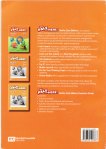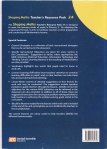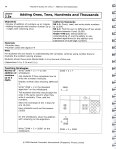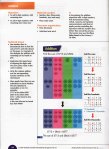One of the most Frequently Asked Questions I get is, “Which “Singapore Math” curriculum should we use?”
There are a lot of differences between the series’ and yet, they are alike in many ways as well. To help you compare the main curriculums that have been released in the past few years, this page includes some examples and a lesson sequence by level that you can reference.
Before continuing, I should say right up front that I was on the writing team for Dimensions Math, and authored the Teacher’s Guides (k-5). In addition, my co-presenter for Jumpstart Your Singapore Math since 2021 was on the writing teams for both Math in Focus 2020 and Primary Mathematics 2022.
There are three updated main textbook options for schools considering a Singapore Math® program:
- Dimensions Math
- Math in Focus 2020
- Primary Math 2022
In addition, there are older options of Primary Mathematics:
- U.S. Edition
- Standards Edition
- Common Core Edition
Math in Focus also has editions from 2010, 2015, and 2018, which will be discontinued in 2023.
What makes these updated versions different from older materials? The emphasis on Singapore’s Three Phases of Learning:
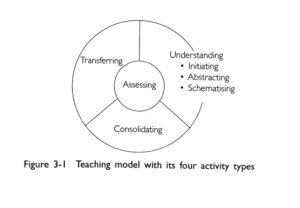
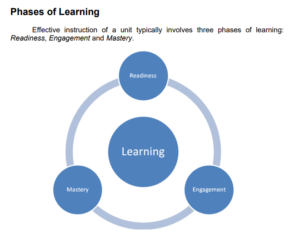
Each curriculum includes components of this model using different terminology:
Dimensions Math
Readiness:
- Chapter Opener
- Think
Engagement:
- Learn
Mastery:
- Do
- Practice
Math in Focus 2020
Readiness:
- Chapter Opener/Recall Prior Knowledge
- Think
- Engage
Engagement:
- Learn
Mastery:
- Try
- Math Journal
- Put on Your Thinking Cap
- Performance Task
- Steam
Primary Mathematics 2022
Readiness:
- Chapter Opener/Recall
Engagement:
- Task
- Learn
- Learn Together
Mastery:
- Practice on Your Own
- Performance Task
- Steam Project Work
- Chapter Practice
Additional Lesson Components
Each of these sets of materials also includes additional lessons worked into the Chapter Planning Guides. For space, these are not repeated in the chapter-by-chapter Lesson Sequence included below.
Dimensions Math:
- Chapter Openers can be one day, or a brief review depending on student prior knowledge.
- Each Chapter has between 1 and 3 Practice Lessons that apply and synthesize the previous lessons in the chapter.
- Each level has quarterly Reviews that are cumulative. (Level 5 has 5 of these Reviews)
Math in Focus 2020
- Chapter Opener/Recall Prior Knowledge activities and assessments start each chapter off as a one-day lesson.
- Each chapter concludes with additional lessons:
-
Math Journal/Put on Your Thinking Cap! (Typically 1 day)
-
Chapter Wrap-Up/Chapter Review/Performance Task (Can be multiple days)
-
Steam Project Work (Some Chapters, Not all)
-
Primary Mathematics 2022
- The title has been shortened to “Primary Math” below to save space.
- Chapter Opener/Recall activities and assessments start each chapter off as a one-day lesson
- Most chapters conclude with additional lessons
- Chapter Wrap-Up/Performance Task
- Steam Project Work
- Chapter Practice (can be two-days)
- Solve! Heuristics
Lesson Sequence
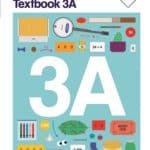
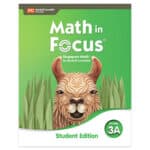
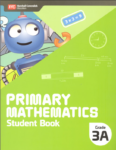
1A Dimensions Math - Math in Focus 2020 - Primary Math 2022
Dimensions Math 1A
Chapter 1 Numbers to 10
Numbers to 10
The Number 0
Order Numbers
Compare Numbers
Chapter 2 Number Bonds
Make 6
Make 7
Make 8
Make 9
Make 10 — Part 1
Make 10 — Part 2
Chapter 3 Addition
Addition as Putting Together
Addition as Adding More
Addition with 0
Addition with Number Bonds
Addition by Counting On
Make Addition Stories
Addition Facts
Chapter 4 Subtraction
Making Subtraction Stories
Methods of Subtraction
Chapter 5 Numbers to 20
Numbers to 20
Add or Subtract Tens or Ones
Order Numbers to 20
Compare Numbers to 20
Addition
Subtraction
Chapter 6 Addition to 20
Add by Making 10 — Part 1
Add by Making 10 — Part 2
Add by Making 10 — Part 3
Addition Facts to 20
Chapter 7 Subtraction Within 20
Subtract from 10 — Part 1
Subtract from 10 — Part 2
Word Problems
Subtract Facts Within 20
Chapter 8 Shapes
Solid and Flat Shapes
Grouping Shapes
Making Shapes
Chapter 9 Ordinal Numbers
Naming Positions
Word Problems
Math in Focus 2020 1A
Chapter 1 Numbers to 10
Counting to 10
Comparing Numbers
Making Number Patterns
Chapter 2 Addition and Subtraction
Making Number Bonds
Ways to Add
Making Addition Stories
Real-World Problems: Addition
Ways to Subtract
Making Subtraction Stories
Real-World Problems: Subtraction
Making Fact Families
Chapter 3 Shapes and Patterns
Exploring Flat Shapes
Exploring Solid Shapes
Making Pictures and Models
Seeing Shapes Around Us
Using Solid Shapes to Make Patterns
Using Flat Shapes to Make Patterns
Chapter 4 Numbers to 20
Counting to 20
Place Value
Comparing and Ordering Numbers
Number Patterns
Chapter 5 Addition and Subtraction Within 20
Ways to Add Fluently
Ways to Subtract Fluently
Real-World Problems: Addition and Subtraction
Chapter 6 Numbers to 40
Counting to 40
Place Value
Comparing, Ordering, and Number Patterns
Chapter 7 Calendar and Time
Using a Calendar
Telling Time to the Hour
Telling Time to the Half Hour
Primary Math 2022 1A
Chapter 1 Numbers to 10
Count On and Count Back
Compare Two Groups of Objects
How Many More?
Compare Numbers
1 More Than
1 Less Than
Number Bonds for 5, 6, and 7
Number Bonds for 8, 9, and 10
Chapter 2 Addition Within 10
Add To
Put Together
Count On to Add
Use Number Bonds to Add
True or False Equations
Chapter 3 Subtraction Within 10
How Many Left?
Finding Part of a Whole
Count Back to Subtract
Use number Bonds to Subtract
Relate Addition and Subtraction
Compare Numbers by Subtraction
Chapter 4 Numbers to 20
Count to 20
Compare and Order Numbers Within 20
Chapter 5 Addition and Subtraction Within 20
Count On to Add
Use Number Bonds to Add
Make 10 to Add
Use Doubles facts to Add
Add Three Numbers
Subtract From Ones
Subtract From a Ten and Make Ten to Subtract
Count Back to Subtract
Use Addition facts to Subtract
Chapter 6 Addition and Subtraction Word Problems
Part-Whole Addition Problems
Part-Whole Subtraction Problems
Comparison Addition Problems
Comparison Subtraction Problems
Chapter 7 Length
Compare and Order Lengths of Three Objects
Estimate and Measure Length in Nonstandard Units
1B Dimensions Math - Math in Focus 2020 - Primary Math 2022
Dimensions Math 1B
Chapter 10 Length
Comparing Lengths Directly
Comparing Lengths Indirectly
Comparing Lengths with Units
Chapter 11 Comparing
Subtraction as Comparison
Making Comparison Subtraction Stories
Picture Graphs
Chapter 12 Numbers to 40
Numbers to 40
Tens and Ones
Counting by Tens and Ones
Comparing
Chapter 13 Addition and Subtraction to 40
Add Ones
Subtract Ones
Make the Next Ten
Use Addition Facts
Subtract from Tens
Use Subtraction Facts
Add Three Numbers
Chapter 14 Grouping and Sharing
Adding Equal Groups
Sharing
Grouping
Chapter 15 Fractions
Halves
Fourths
Chapter 16 Numbers to 100
Numbers to 100
Tens and Ones
Count by Ones or Tens
Compare Numbers to 100
Chapter 17 Addition and Subtraction Within 100
Add Ones—Part 1
Add Tens
Add Ones—Part 2
Add Tens and Ones—Part 1
Add Tens and Ones—Part 2
Subtract Ones—Part 1
Subtract from Tens
Subtract Ones—Part 2
Subtract Tens
Subtract Tens and Ones—Part 1
Subtract Tens and Ones—Part 2
Chapter 18 Time
Telling Time to the Hour
Telling Time to the Half Hour
Telling Time to the 5 Minutes
Chapter 19 Money
Coins
Counting Money
Bills
Shopping
Math in Focus 1B
Chapter 8 Addition and Subtraction Within 40
Addition Without Regrouping
Addition With Regrouping
Subtraction Without Regrouping
Subtraction With Regrouping
Real-World Problems: Addition and Subtraction
Getting Ready for Multiplication
Chapter 9 Length and Weight
Comparing Lengths
Comparing More Lengths
Using a Start Line
Measuring Lengths
Measuring Lengths in Units
Comparing Weights
Measuring Weight
Measuring Weight in Units
Chapter 10 Numbers to 120
Counting to 120
Place Value
Comparing, Ordering, and Number Patterns
Chapter 11 Addition and Subtraction to 100
Addition Without Regrouping
Addition With Regrouping
Subtraction Without Regrouping
Subtraction With Regrouping
Chapter 12 Picture Graphs and Bar Graphs
Simple Picture Graphs
Tally Chart and Bar Graphs
Chapter 13 Money
Penny, Nickel, and Dime
Quarter
Counting Money
Adding and Subtracting Money
Primary Math 1B
Chapter 8 Numbers to 120
Count to 40
Count to 120
Tens and Ones
Compare and Order Numbers Within 100
Penny, Nickel, and Dime
Quarter
Count Coins
Chapter 9 Addition and Subtraction Within 100
Add Ones
Make Tens to Add
Add Ones Without Renaming
Add Ones With Renaming
Add Tens
Add 2-Digit Numbers Without Renaming
Add 2-Digit Numbers With Renaming
Subtract Ones
Subtract Ones From Tens and Make Tens to Subtract
Subtract Ones Without Renaming
Subtract Ones With Renaming
Subtract Tens
Subtract 2-Digit Numbers Without renaming
Subtract 2-Digit Numbers With Renaming
Chapter 10 Data
Picture Graphs
Tally Charts and Picture Graphs
Chapter 11 Shapes
2-D Shapes
Composing 2-D Shapes
Composing 3-D Shapes
Equal Parts
Cut 2-D SHapes into Halves and Fourths
Chapter 12 Time
Tell Time to the Hour
Tell Time to the Half-Hour
2A Dimensions Math - Math in Focus 2020 - Primary Math 2022
Dimensions Math 2A
Chapter 1 Numbers to 1,000
Tens and Ones
Counting by Tens or Ones
Comparing Tens and Ones
Hundreds, Tens, and Ones
Place Value
Comparing Hundreds, Tens, and Ones
Counting by Hundreds, Tens, or Ones
Chapter 2 Addition and Subtraction – Part 1
Strategies for Addition
Strategies for Subtraction
Parts and Whole
Comparison
Chapter 3 Addition and Subtraction – Part 2
Addition Without Regrouping
Subtraction Without Regrouping
Addition with Regrouping Ones
Addition with Regrouping Tens
Addition with Regrouping Tens and Ones
Subtraction with Regrouping from Tens
Subtraction with Regrouping from Hundreds
Subtraction with Regrouping from Two Places
Subtraction with Regrouping across Zeros
Chapter 4 Length
Centimeters
Estimating Length in Centimeters
Meters
Estimating Length in Meters
Inches
Using Rulers
FeetChapter 5 Weight
Grams
Kilograms
Pounds
Chapter 6 Multiplication and Division
Multiplication – Part 1
Multiplication – Part 2
Division – Part 1
Division – Part 2
Chapter 7 Multiplication and Division of 2, 5, and 10
The Multiplication Table of 5
Multiplication Facts of 5
The Multiplication Table of 2
Multiplication Facts of 2
The Multiplication Table of 10
Dividing by 2
Dividing by 5 and 10
Word Problems
Math in Focus 2020 2A
Chapter 1 Numbers to 1,000
Counting to 1,000
Place Value
Comparing and Ordering Numbers
Number Patterns
Chapter 2 Addition Within 1,000
Adding Fluently Within 100
Adding Without Regrouping
Adding with Regrouping in Ones
Adding with Regrouping in Tens
Adding with Regrouping in Ones and Tens
Adding Four 2-Digit Numbers
Chapter 3 Subtraction Within 1,000
Subtracting Fluently Within 100
Subtracting Without Regrouping
Subtracting with Regrouping in Tens
Subtracting with Regrouping in Hundreds and Tens
Subtracting with Regrouping in Hundreds, Tens, and Ones
Subtracting Across Zeros
Chapter 4 Using Bar Models: Addition and Subtraction
Using Part-Part -Whole in Addition and Subtraction
Adding On and Taking Away Sets
Comparing Two Sets
Real-World Problems: Two-Step Problems
Chapter 5 Length
Measuring in Meters
Comparing and Ordering Metric Lengths
Real-World Problems: Addition and Subtraction of Metric Lengths
Measuring in Feet
Comparing and Ordering Customary Lengths
Real-World Problems: Addition and Subtraction of Customary Lengths
Chapter 6 Mass
Measuring in Kilograms
Measuring in Grams
Comparing Masses in Kilograms and Grams
Real-World Problems: Addition and Subtraction of Masses
Primary Math 2022 2A
Chapter 1 Numbers to 1,000
Count to 1,000
Hundreds, Tens, and Ones
1 More, 1 Less, 10 More, 10 Less, 100 More, or 100 Less
Count On and Count Back by 1s, 10s, and 100s
Number Patterns
Compare and Order Numbers
Numbers on the Number Line
Bills
Count And Exchange Money
Compare Amounts of Money
Chapter 2 Addition Within 1,000
Count On to Add Fluently Within 20
Make a Ten to Add Fluently Within 20
Use Doubles Facts to Add Fluently Within 20
Add Tens
Add Hundreds
Add Fluently Without Renaming Within 100
Add a 3-Digit Number and a 2-Digit Number Without Renaming Within 100
Add Two 3-Digit Numbers Without Renaming Within 1,000
Make Tens to Add Within 100
Add Fluently With Renaming in Tens and Ones
Add a 3-Digit Number and a 2-Digit Number Without Renaming in Ones
Add Two 3-Digit Numbers With renaming in Ones
Add a 3-Digit Number and a 2-Digit Number With Renaming in Tens
Add a 3-Digit Number and a 2-Digit Number With Renaming in Tens and Ones
Add two 3-Digit Numbers With Renaming in Tens and Ones
Add Three or Four 2-Digit Numbers
Chapter 3 Subtraction Within 1,000
Take Away to Subtract Fluently Within 20
Subtract From 10 Fluently Within 20
Count Back to Subtract Fluently Within 20
Count On to Subtract Fluently Within 20
Subtract Tens
Subtract Hundreds
Subtract Fluently Without Renaming Within 100
Subtract up to a 2-Digit Number from a 3-Digit Number Without Renaming Within 1,000
Subtract a 3-Digit Number Without Renaming in Tens and Ones
Subtract Fluently With Renaming Within 100
Subtract up to a 2-Digit Number from a 3-Digit Number With Renaming in Tens and Ones
Subtract a 3-Digit Number With Renaming in Tens and Ones
Subtract a 2-Digit Number from a 3-Digit Number With Renaming in Hundreds and Tens
Subtract a 3-Digit Number With Renaming in Hundreds and Tens
Subtract a 3-Digit Number With Renaming in Hundreds, Tens, and Ones
Relate Addition and Subtraction
Chapter 4 Addition and Subtraction Using Bar Models
Sum and Difference
One-Step Word Problems: Addition
One-Step Word Problems: Subtraction
One-Step Word Problems: Addition or Subtraction
One-Step Word Problems: Comparison
Two-Part Word problems: Addition and Subtraction
Two-Step Word problems: Addition and Subtraction
2B Dimensions Math - Math in Focus 2020 - Primary Math 2022
Dimensions Math 2B
Chapter 8 Mental Calculation
Adding Ones Mentally
Adding Tens Mentally
Making 100
Adding 97, 98, or 99
Subtracting Ones Mentally
Subtracting Tens Mentally
Subtracting 97, 98, or 99
Chapter 9 Multiplication and Division of 3 and 4
The Multiplication Table of 3
Multiplication Facts of 3
Dividing by 3
The Multiplication Table of 4
Dividing by 4
Chapter 10 Money
Making $1
Dollars and Cents
Making Change
Comparing Money
Adding Money
Subtracting Money
Chapter 11 Fractions
Halves and Fourths
Writing Unit Fractions
Writing Fractions
Fractions that Make 1 Whole
Comparing and Ordering Fractions
Chapter 12 Time
Telling Time
Time Intervals
A.M. and P.M.
Chapter 13 Capacity
Comparing Capacity
Units of Capacity
Chapter 14 Graphs
Picture Graphs
Bar Graphs
Chapter 15 Shapes
Straight and Curved Sides
Polygon
Semicircles and Quarter-circles
Patterns
Solid Shapes
Math in Focus 2020 2B
Chapter 7 Graphs and Line Plots
Picture Graphs
Bar Graphs
Line Plots
Chapter 8 Multiplication and Division
How to Multiply
How to Divide
Real-World Problems: Multiplication and Division
Odd and Even Numbers
Chapter 9 Multiplication Tables
Multiplying by 2
Multiplying by 5
Multiplying by 10
Multiplying by 3
Multiplying by 4
Multiplying Numbers in Any Order
Dividing Using Multiplication Facts
Chapter 10 Time and Money
Reading and Writing Time
Using A.M and P.M.
Bills
Comparing Amounts of Money
Real-World Problems: Money
Chapter 11 Shapes
Lines and Surfaces
Flat Shapes
Solid Shapes
Primary Math 2022 2B
Chapter 5 Length
Measure and Estimate Length in Meters
Measure and Estimate Lines and Curves
Measure and Estimate Length in Inches
Measure and Estimate Length in Feet
Measure and Estimate Length in Yards
Compare and Order Lengths in Metric Units
Compare and Order Lengths in Customary Units
One-Step Word Problems
Two-Part and Two-Step Word Problems
Chapter 6 Multiplication
Add Equal Groups
Even and Odd Numbers
Skip Count by 2s, 5s, and 10s
Multiplication
Chapter 7 Time
Tell Time to 5 Minutes
Use A.M. and P.M. to Tell Time
Hours and Minutes
Chapter 8 Data
Picture Graphs and Draw Picture Graphs
Bar Graphs and Draw Bar Graphs
Line Plots
Make Line Plots
Chapter 9 Shapes
2-D Shapes and Draw 2-D Shapes
3-D Shapes
Partition a Rectangle into Squares
Partition 2-D Shapes into Equal Parts
3A Dimensions Math - Math in Focus 2020 - Primary Math 2022
Dimensions Math 3A
Chapter 1 Numbers to 10,000
Numbers to 10,000
Place Value — Part 1
Place Value — Part 2
Comparing Numbers
The Number Line
Number Patterns
Rounding to the Nearest Thousand
Rounding to the Nearest Hundred
Rounding to the Nearest Ten
Chapter 2 Addition and Subtraction – Part 1
Mental Addition — Part 1
Mental Addition — Part 2
Mental Subtraction — Part 1
Mental Subtraction — Part 2
Making 100 and Making 1,000
Strategies for Numbers Close to Hundreds
Sum and Difference
Word Problems — Part 1
Word Problems — Part 2
2-Step Word Problems
Chapter 3 Addition and Subtraction – Part 2
Addition with Regrouping
Subtraction with Regrouping — Part 1
Subtraction with Regrouping — Part 2
Estimating Sums and Differences — Part 1
Estimating Sums and Differences — Part 2
Word Problems
Chapter 4 Multiplication and Division
Looking Back at Multiplication
Strategies for Finding the Product
Looking Back at Division
Multiplying and Dividing with 0 and 1
Division with Remainders
Odd and Even Numbers
Word Problems — Part 1
Word Problems — Part 2
2-Step Word Problems
Chapter 5 Multiplication
Multiplying Ones, Tens, and Hundreds
Multiplication Without Regrouping
Multiplication with Regrouping Tens
Multiplication with Regrouping Ones
Multiplication with Regrouping Ones and Tens
Multiply a 3-digit Number with Regrouping Once
Multiplication with Regrouping More Than Once
Chapter 6 Division
Dividing Tens and Hundreds
Dividing a 2-digit Number by 2 — Part 1
Dividing a 2-digit Number by 2 — Part 2
Dividing a 2-digit Number by 3, 4, and 5
Dividing a 3-digit Number by 2
Dividing a 3-digit Number by 3, 4, and 5
Dividing a 3-digit Number, Quotient is 2 Digits
Chapter 7 Graphs and Tables
Picture Graphs and Bar Graphs
Bar Graphs and Tables
Math in Focus 2020 3A
Chapter 1 Numbers to 10,000
Counting to 10,000
Place Value
Comparing and Ordering Numbers
Rounding Numbers to the Nearest Ten
Rounding Numbers to the Nearest Hundred
Chapter 2 Addition Within 10,000
Addition Problems
Mental Addition
Adding Fluently Within 1,000
Adding Without Regrouping
Adding with Regrouping
Real-World Problems: Addition
Chapter 3 Subtraction Within 10,000
Mental Subtraction
Subtracting Fluently Within 1,000
Subtracting Without Regrouping
Subtracting with Regrouping
Real-World Problems: Subtraction
Chapter 4 Multiplication Tables
Multiplying by 6
Multiplying by 7
Multiplying by 8
Multiplying by 9
Multiplying by 11
Multiplying by 12
Multiplication Patterns
Dividing Using Multiplication Facts
Chapter 5 Multiplication
Multiplying Using Models
Multiplying Without Regrouping
Multiplying with Regrouping
Chapter 6 Using Bar Models: The Four Operations
Real-World Problems: Multiplication
Real-World Problems: Division
Real-World Problems: Four Operations
Primary Math 2022 3A
Chapter 1 Numbers to 10,000
Place Value
Compare and Order Numbers
Number Patterns
Rounding Numbers
Chapter 2 Addition and Subtraction Within 10,000
Add Fluently Within 1,000
Subtract Fluently Within 1,000
Addition Within 10,000 Without Renaming
Addition Within 10,000 With Renaming
Subtraction Within 10,000 Without Renaming
Subtraction Within 10,000 With Renaming
Add Using Number lines
Other Strategies to Add
Subtract Using Number lines
Other Strategies to Subtract
Word Problems
Chapter 3 Multiplication and Division
Use Equal groups to Multiply
Use Arrays to Multiply
Multiply by 2
Use Doubles to Multiply by 2
Multiply by 5
Multiply by 10
Multiply by 3
Multiply By 3 Using Known Facts
Multiply by 4
Multiply By 4 Using Known Facts
Word Problems
Division as Sharing
Division as grouping
Divide by 2
Divide by 5
Divide by 10
Divide by 3
Divide by 4
Word Problems: Divide by 2, 3, 4, 5, and 10
Word Problems: Multiply and Divide by 2, 3, 4, 5, and 10
Chapter 4 Multiplication and Division of 6, 7, 8, and 9
Multiply By 6
Divide by 6
Word Problems: Multiply and Divide by 6
Multiply By 7
Divide by 7
Word Problems: Multiply and Divide by 7
Multiply By 8
Divide by 8
Word Problems: Multiply and Divide by 8
Multiply By 9
Divide by 9
Word Problems: Multiply and Divide by 9
Multiply by tens
Multiply a 2-Digit Number by a 1-Digit Number
Two-Part Word Problems: The Four Operations
Two-Step Word Problems: The Four Operations
Chapter 5 Time
Hours and Minutes
Time Intervals
Word Problems: Find the Duration
Word Problems: Find the Start Time or End Time
3B Dimensions Math - Math in Focus 2020 - Primary Math 2022
Dimensions Math 3B
Chapter 8 Multiplying and Dividing with 6, 7, 8, and 9
The Multiplication Table of 6
The Multiplication Table of 7
Multiplying by 6 and 7
Dividing by 6 and 7
The Multiplication Table of 8
The Multiplication Table of 9
Multiplying by 8 and 9
Dividing by 8 and 9
Chapter 9 Fractions – Part 1
Fractions of a Whole
Fractions on a Number Line
Comparing Fractions with Like Denominators
Comparing Fractions with Like Numerators
Chapter 10 Fractions Part 2
Equivalent Fractions
Finding Equivalent Fractions
Simplifying Fractions
Comparing Fractions — Part 1
Comparing Fractions — Part 2
Adding and Subtracting Fractions — Part 1
Adding and Subtracting Fractions — Part 2
Chapter 11 Measurement
Meters and Centimeters
Subtracting from Meters
Kilometers
Subtracting from Kilometers
Liters and Milliliters
Kilograms and Grams
Word Problems
Chapter 12 Geometry
Circles
Angles
Right Angles
Triangles
Properties of Triangles
Properties of Quadrilaterals
Using a Compass
Chapter 13 Area and Perimeter
Area
Units of Area
Area of Rectangles
Area of Composite Figures
Perimeter
Perimeter of Rectangles
Area and Perimeter
Chapter 13 Area and Perimeter
Area
Units of Area
Area of Rectangles
Area of Composite Figures
Perimeter
Perimeter of Rectangles
Area and Perimeter
Chapter 14 Time
Units of Time
Calculating Time — Part 1
Calculating Time — Part 2
Calculating Time — Part 3
Calculating Time — Part 4
Chapter 15 Money
Dollars and Cents
Making $10
Adding Money
Subtracting Money
Word Problems
Math in Focus 2020 3B
Chapter 7 Fractions
Understanding Unit Fractions
Fractions as Part of a Whole
Fractions as Part of a Set
Understanding Equivalent Fractions
Comparing Fractions
Chapter 8 Measurement
Mass: Kilograms and Grams
Liquid Volume: Liters and Milliliters
Real-World Problems: One-Step Problems
Chapter 9 Area and Perimeter
Area
Square Units (cm2 and in2)
Square Units (m2 and ft2)
Perimeter and Area
More Perimeter
Chapter 10 Time
Telling Time
Converting Hours and Minutes
Elapsed Time
Chapter 11 Bar Graphs and Line Plots
Making Picture Graphs with Scales
Making Bar Graphs with Scales
Reading and Interpreting Bar Graphs
Line Plots and Estimation
Chapter 12 Angles, Lines, and Two-Dimensional Figures
Introducing Angles
Introducing Perpendicular and Parallel Lines
Polygons
Primary Math 2022 3B
Chapter 6 Area and Perimeter
Area in Square Units
Area in Square Centimeters and Square Inches
Area in Square Meter, Square Feet, and Square Yards
Area of Squares and Rectangles
Perimeter
Word Problems: Perimeter
Composite Figures
Word Problems
Chapter 7 Fractions
Unit Fractions
More Fractions
Fractions Greater Than 1
Compare Two Fractions
Compare and Order Fractions
Equivalent Fractions
Fractions on a Number Line
Fractions of a Set
Chapter 8 Mass and Liquid Volume
Measure Mass in Kilograms
Measure Mass in Grams
Measure Volume in Liters
Word Problems
Chapter 9 Data
Picture Graphs
Bar Graphs
Line Plots
Chapter 10 Shapes
Angles and Shapes
Angles and triangles
Angles and Quadrilaterals
4A Dimensions Math - Math in Focus 2020 - Primary Math 2022
Dimensions Math 4A
Chapter 1 Numbers to One Million Numbers to 100,000 Numbers to 1,000,000 Number Patterns Comparing and Ordering Numbers Rounding 5-Digit Numbers Rounding 6-Digit Numbers Calculations and Place Value Chapter 2 Addition and Subtraction Addition Subtraction Other Ways to Add and Subtract — Part 1 Other Ways to Add and Subtract — Part 2 Word Problems Chapter 3 Multiples and Factors Multiples Common Multiples Factors Prime Numbers and Composite Numbers Common Factors Chapter 4 Multiplication Mental Math for Multiplication Multiplying by a 1-Digit Number — Part 1 Multiplying by a 1-Digit Number — Part 2 Multiplying by a Multiple of 10 Multiplying by a 2-Digit Number — Part 1 Multiplying by a 2-Digit Number — Part 2 Chapter 5 Division Mental Math for Division Estimation and Division Dividing 4-Digit Numbers Word Problems Challenging Word Problems Chapter 6 Fractions Equivalent Fractions Comparing and Ordering Fractions Improper Fractions and Mixed Numbers Expressing an improper Fraction as a Mixed Number Expressing a Mixed Number as an Improper Fraction Fractions and Division Chapter 7 Adding and Subtracting Fractions Adding and Subtracting Fractions — Part 1 Adding and Subtracting Fractions — Part 2 Adding a Mixed Number and a Fraction Adding Mixed Numbers Subtracting a Fraction from a Mixed Number Subtracting Mixed Numbers Chapter 8 Multiplying a Fraction and a Whole Number Multiplying a Unit Fraction by a Whole Number Multiplying a Fraction by a Whole Number — Part 1 Multiplying a Fraction by a Whole Number — Part 2 Fraction of a Set Multiplying a Whole Number by a Fraction — Part 1 Multiplying a Whole Number by a Fraction — Part 2 Word Problems — Part 1 Word Problems — Part 2 Chapter 9 Line Graphs and Line Plots Line Graphs Drawing Line Graphs Line PlotsMath in Focus 2020 4A
Chapter 1 Working with Whole Numbers Numbers to 100,000 Numbers to 1,000,000 Comparing and Ordering Numbers Adding and Subtracting Multi-Digit Numbers Rounding and Estimating Real-World Problems: Addition and Subtraction Chapter 2 Multiplication and Division Multiplying by a 1-Digit or 2-Digit Number Quotient and Remainder Dividing by a 1-digit Number Real-World Problems: Multiplication and Division Factors Multiples Real-World Problems: The Four Operations Chapter 3 Fractions and Mixed Numbers Equivalent Fractions Comparing and Ordering Fractions Adding and Subtracting Like Fractions Mixed Numbers Improper Fractions Renaming Improper Fractions and Mixed Numbers Adding and Subtracting Mixed Numbers Real-World Problems: Fractions Chapter 4 Decimals Understanding Tenths Understanding Hundredths Comparing and Ordering Decimals Rounding Decimals Fractions and Decimals Chapter 5 Conversion of Measurements Length in Customary Units Weight and Volume in Customary Units Real-World Problems: Customary Units of Measure Length in Metric Units Mass and Volume in Metric Units Real-World Problems: Metric Units of Measure TimePrimary Math 2022 4A
Chapter 1 Multi-Digit Whole Numbers Place Value Compare and Order Numbers Within 1,000,000 Number and Shape Pattern Round to the Nearest Thousand Round to the Nearest Ten Thousand or Hundred Thousand Chapter 2 Addition and Subtraction Add Multi-Digit Whole Numbers Subtract Multi-Digit Whole Numbers One-Step Word Problems: Addition and Subtraction Two-Part Word Problems: Addition and Subtraction Two-Step Word Problems: Addition and Subtraction Chapter 3 Multiplication and Division Multiplicative Comparisons Word Problems: Multiplicative Comparisons Factors and Common Factors Multiples and Common Multiples Prime and Composite Numbers Multiply by Tens, Hundreds, and Thousands Multiply a 2-Digit Number by a 1-Digit Number Multiply a 3-Digit or a 4-Digit Number by a 1-Digit Number Word Problems: Multiplying by a 1-Digit Number Multiply a 2-Digit Number by a 2-Digit Number Quotient and Remainder Divide a 2-Digit Number by a 1-Digit Number Without and With Remainder Divide a 3-Digit by a 1-Digit Number Without and With Remainder Divide a 4-Digit Number by a 1-Digit Number Without and With Remainder Estimate Quotients Word Problems: Dividing by a 1-Digit Number Two-Step Word Problems: Multiplication and Division Chapter 4 The Four Operations Using Bar Models Two-Part Word Problems: The Four Operations Multi-Step Word Problems: The Four Operations Chapter 5 Fractions Equivalent fractions Multiply to Find Equivalent Fractions Divide to Find Equivalent Fractions Compare Two Fractions Compare and Order Fractions Add Like Fractions Subtract Like Fractions One-Step Word Problems: Addition and Subtraction of Like Fraction Two-Part Word Problems: Addition and Subtraction of Like Fractions Two-Step Word Problems: Addition and Subtraction of Like Fractions Chapter 6 Mixed Numbers, Improper Fractions, and Operations on Fractions Mixed Numbers Improper Fractions Express Improper Fractions as Mixed Numbers Express Mixed Numbers as Improper Fractions Add Mixed Numbers Subtract Mixed Numbers One-Step Word Problems: Add and Subtract Mixed Numbers Two-Part Word Problems: Add and Subtract Mixed Numbers Two-Step Word Problems: Add and Subtract Mixed Numbers Fractions as Multiples of a Unit Fraction Fractions as Multiples of Another Fraction Fraction as Parts of a Quantity Line Plots Word Problems: Line Plots4B Dimensions Math - Math in Focus 2020 - Primary Math 2022
Dimensions Math 4B
Chapter 10 Measurement
Metric Units of Measurement
Customary Units of Length
Customary Units of Weight
Customary Units of Capacity
Units of Time
Fractions and Measurement — Part 1
Fractions and Measurement — Part 2
Chapter 11 Area and Perimeter
Area of Rectangles — Part 1
Area of Rectangles — Part 2
Area of Composite Figures
Perimeter — Part 1
Perimeter — Part 2
Chapter 12 Decimals
Tenths — Part 1
Tenths — Part 2
Hundredths — Part 1
Hundredths — Part 2
Expressing Decimals as Fractions in Simplest Form
Expressing Fractions as Decimals
Comparing and Ordering Decimals
Rounding Decimals
Chapter 13 Addition and Subtraction of Decimals
Adding and Subtracting Tenths
Adding Tenths with Regrouping
Subtracting Tenths with Regrouping
Adding Hundredths
Subtracting from 1 and 0.1
Subtracting Hundredths
Money, Decimals, and Fractions
Chapter 14 Multiplication and Division of Decimals
Multiplying Tenths and Hundredths
Multiplying Decimals by a Whole Number — Part 1
Multiplying Decimals by a Whole Number — Part 2
Dividing Tenths and Hundredths
Dividing Decimals by a Whole Number — Part 1
Dividing Decimals by a Whole Number — Part 2
Dividing Decimals by a Whole Number — Part 3
Chapter 15 Angles
The Size of Angles
Measuring Angles
Drawing Angles
Adding and Subtracting Angles
Reflex Angles
Chapter 16 Lines and Shapes
Perpendicular Lines
Parallel Lines
Drawing Perpendicular and Parallel Lines
Quadrilaterals
Lines of Symmetry
Symmetrical Figures and Patterns
Chapter 17 Properties of Cuboids
Cuboids
Nets of Cuboids
Faces and Edges of Cuboids
Math in Focus 2020 4B
Chapter 6 Area and Perimeter
Area and Unknown Sides
Composite Figures
Real-World Problems: Area and Perimeter
Chapter 7 Angles and Line Segments
Understanding and Measuring Angles
Drawing Angles to 180°
Turns and Right Angles
Finding Unknown Angles
Drawing Perpendicular and Parallel Line Segments
Chapter 8 Polygons and Symmetry
Classifying Triangles
Classifying Polygons
Symmetric Shapes and Lines of Symmetry
Making Symmetric Shapes and Patterns
Chapter 9 Table and Line Graphs
Making and Interpreting a Table
Using a Table
Line Graphs
Primary Math 2022 4A
Chapter 7 Decimals
Tenths
Compare and Order Tenths
Fractions and Decimals in Tenths
Hundredths
Compare and Order Hundredths
Fractions and Decimals in Hundredths
Number Patterns
Chapter 8 Area and Perimeter
Areas and Perimeters of Rectangles and Squares
Find Unknown Sides of Rectangles and Squares
Area and Perimeter of Composite Figures
Chapter 9 Geometry
Points, Lines, Line Segments, Rays, and Angles
Acute Angles, Right Angles, and Obtuse Angles
Measure Angles
Draw Angles up to 180 Degrees
Find Unknown Angle Measures
DrawPerpendicular and Parallel Lines
Properties of 2-D Figures
Line of Symmetry
Chapter 10 Measurement, Time, and Conversion
Metric Length in Kilometers, Meters, and Centimeters
Metric Mass in Kilograms and Grams
Metric Capacity and Volume in Liters and Milliliters
Customary Units of Length Including Miles, Yards, Feet, and Inches
Customary Units of Mass Including Tons, Pounds, and Ounces
Customary Units of Capacity and Volume Including Gallons, Quarts, Pints, Cups, and Fluid Ounces
Hours, Minutes, and Seconds
Word Problems Involving Units of Measurement and Time
5A Dimensions Math - Math in Focus 2020 - Primary Math 2022
Dimensions Math 5A
Chapter 1 Whole Numbers
Numbers to One Billion
Multiplying by 10, 100, and 1,000
Dividing by 10, 100, and 1,000
Multiplying by Tens, Hundreds, and Thousands
Chapter 2 Writing and Evaluating Expressions
Expressions with Parentheses
Order of Operations — Part 1
Order of Operations — Part 2
Other Ways to Write and Evaluate Expressions
Word Problems — Part 1
Word Problems — Part 2
Chapter 3 Multiplication and Division
Multiplying by a 2-digit Number — Part 1
Multiplying by a 2-digit Number — Part 2
Dividing by a Multiple of Ten
Divide a 2-digit Number by a 2-digit Number
Divide a 3-digit Number by a 2-digit Number — Part 1
Divide a 3-digit Number by a 2-digit Number — Part 2
Divide a 4-digit Number by a 2-digit Number
Chapter 4 Addition and Subtraction of Fractions
Fractions and Division
Adding Unlike Fractions
Subtracting Unlike Fractions
Adding Mixed Numbers— Part 1
Adding Mixed Numbers— Part 2
Subtracting Mixed Numbers— Part 1
Subtracting Mixed Numbers— Part 2
Chapter 5 Multiplication of Fractions
Multiplying a Fraction by a Whole Number
Multiplying a Whole Number by a Fraction
Word Problems — Part 1
Multiplying a Fraction by a Unit Fraction
Multiplying a Fraction by a Fraction — Part 1
Multiplying a Fraction by a Fraction — Part 2
Multiplying Mixed Numbers
Word Problems — Part 2
Fractions and Reciprocals
Chapter 6 Division of Fractions
Dividing a Unit Fraction by a Whole Number
Dividing a Fraction by a Whole Number
Dividing a Whole Number by a Unit Fraction
Dividing a Whole Number by a Fraction
Word Problems
Chapter 7 Measurement
Fractions and Measurement Conversions
Fractions and Area
Area of a Triangle — Part 1
Area of a Triangle — Part 2
Area of Complex Figures
Chapter 8 Volume of Solid Figures
Cubic Units
Volume of Cuboids
Finding the Length of an Edge
Volume of Complex Shapes
Volume and Capacity — Part 1
Volume and Capacity — Part 2
Math in Focus 2020 5A
Chapter 1 Whole Numbers
Numbers to 10,000,000
Multiplying by Tens, Hundreds, or Thousands
Multiplying and Dividing by 2-digit Numbers Fluently
Order of Operations
Real-World Problems: Four Operations and Whole Numbers
Chapter 2 Fractions and Mixed Numbers
Fractions, Mixed Numbers, and Division Expressions
Adding Unlike Fractions and Mixed Numbers
Subtracting Unlike Fractions and Mixed Numbers
Real-World Problems: Fractions and Mixed Numbers
Chapter 3 Multiplying and Dividing Fractions and Mixed numbers
Multiplying Fractions and Whole Numbers
Multiplying Proper Fractions
Real-World Problems: Multiplying Proper Fractions
Multiplying Improper Fractions
Multiplying Mixed Numbers and Whole Numbers
Real-World Problems: Multiplying Mixed Numbers
Dividing Fractions and Mixed numbers
Real-World Problems: Multiplying with Dividing Fractions
Chapter 4 Decimals
Understanding Thousandths
Comparing, Ordering, and Rounding Decimals
Decimals, Fractions, and Mixed Numbers
Chapter 5 The Four operations of Decimals
Adding Decimals
Subtracting Decimals
Multiplying Decimals
Multiplying Decimals by Tens, Hundreds, Thousands, and Powers of Tens
Dividing Decimals
Dividing Decimals by Tens, Hundreds, and Thousands
Estimating Decimals
Converting Metric Units
Real-World Problems: Decimals
Primary Math 2022 5A
Chapter 1 Multi-Digit Whole Numbers
Numbers to 10 Million and Place Value
Multiply by Tens, Hundreds, and Thousands
Multiply by Powers of 10
Divide by Tens, Hundreds, and Thousands
Chapter 2 The Four Operations of Whole Numbers
Order of Operations
Numerical Expressions
Multiply by a 2-Digit Number With and Without Renaming
Word Problems: Multiplying by a 2-Digit Number
Divide by Tens With and Without Remainder
Divide a 2-Digit Number by a 2-Digit Number With and Without Remainder
Divide by a 2-Digit Number With and Without Remainder
Word Problems: Dividing by a 2-Digit Number
Three-Step Word Problems: The Four Operations
Multi-Step Word Problems: The Four Operations
Chapter 3 Addition and Subtraction of Fractions
Add Unlike Fractions
Subtract Unlike Fractions
Add Mixed Numbers
Subtract Mixed Numbers
Two-Part Word Problems
Two-Step Word Problems
Chapter 4 Multiplication and Division of Fractions
Product of Fractions and Whole Numbers
Product of Mixed Numbers and Whole Number
Word Problems; Product of Fractions and Whole Numbers
Product of Fractions
Product of Improper Fractions
Word Problems: Product of Fractions
Product of Two Mixed Numbers
Express Fractions as Division
Divide a Unit Fraction by a Whole Number
Divide a Fraction by a Whole Number
Word Problems: Dividing by a Whole Number
Divide a Whole Number by a Unit Fraction
Word Problems: Dividing a Unit Fraction
Chapter 5 Word Problems: The Four Operations of Fractions
Solve Part-Whole and Comparison Problems
Solve Problems Using the Unitary Method
Solve Problems Involving a Finding a Fraction of a Fraction
Chapter 6 Decimals
Thousandths
Compare and Order Decimals
Express Decimals to Thousandths as Fractions
Rounding Decimals to the Nearest Whole Number, Tenth or Hundredth
5B Dimensions Math - Math in Focus 2020 - Primary Math 2022
Dimensions Math 5B
Chapter 9 Decimals
Thousandths
Place Value to Thousandths
Comparing Decimals
Rounding Decimals
Multiply Decimals by 10, 100, and 1,000
Divide Decimals by 10, 100, and 1,000
Conversion of Measures
Mental Calculation
Chapter 10 The Four operations of Decimals
Adding Decimals to Thousandths
Subtracting Decimals
Multiplying by 0.1 or 0.01
Multiplying by a Decimal
Dividing by a Whole Number—Part 1
Dividing by a Whole Number—Part 2
Dividing a Whole Number by 0.1 and 0.01
Dividing a Whole Number by a Decimal
Chapter 11 Geometry
Measuring Angles
Angles and Lines
Classifying Triangles
The Sum of the Angles in a Triangle
The Exterior Angle of a Triangle
Classifying Quadrilaterals
Angles of Quadrilaterals—Part 1
Angles of Quadrilaterals—Part 2
Drawing Triangles and Quadrilaterals
Chapter 12 Data Analysis and Graphs
Average—Part 1
Average—Part 2
Line Plots
Coordinate Graphs
Straight Line Graphs
Chapter 13 Ratio
Finding the Ratio
Equivalent Ratios
Finding a Quantity
Comparing Three Quantities
Word Problems
Chapter 13 Rate
Finding the Rate
Rate Problems—Part 1
Rate Problems—Part 2
Word Problems
Chapter 14 Percentage
Meaning of Percentage
Expressing Percentages as Fractions
Percentages and Decimals
Expressing Fractions as Percentages
Percentage of a Quantity
Word Problems
Math in Focus 2020 5B
Chapter 6 Volume
Building Solids using Unit Cubes
Understanding and Measuring Volume
Real-World Problems: Volume of a Rectangular Prism
Real-World Problems: Volume of a Composite Solids
Chapter 7 Line Plots and the Coordinate Plane
Making and Interpreting Line Plots
Graphing on a Coordinate Plane
Number Patterns and Graphs
Chapter 8 Polygons
Classifying Triangles
Classifying Polygons
Chapter 9 Ratio
Finding Ratios
Equivalent Ratios
Comparing Three Quantities
Real-World Problems: Ratio
Chapter 10 Percent
Percent
Fractions, Decimals, and Percent
Percentage of a Quantity
Real-World Problems: Percent
Primary Math 2022 5B
Chapter 7 The Four Operations of Decimals
Add Tenths and Hundredths
Add Decimals to Hundredths
Subtract Tenths and Hundredths
Subtract Decimals to Hundredths
Multiply Decimals by a 1-Digit Whole Number
Multiply by Tens and by a 2-Digit Whole Number
Multiply by Hundreds and Thousands
Multiply Decimals by Tenths and Hundredths
Multiply Decimals by Decimals
Divide Decimals by a 1-Digit Whole Number
Divide by Tens and by a 2-Digit Whole Number
Divide by Hundreds and Thousands
Divide Decimals by Tenths and Hundredths
Divide Decimals by Decimals
Convert Larger to Smaller Measurement Units
Convert Smaller to Larger Measurement Units
Chapter 8 Word Problems: The Four Operations of Decimals
Two-Part Word Problems: The Four Operations
Two-Step Word Problems: The Four Operations
Multi-Step Word Problems: The Four Operations
Chapter 9 Volume
Measure and Compare Volumes
Volume of Rectangular Prisms
Volume of Composite Solids
Word Problems: Volume of Solids
Chapter 10 Properties and Classification of 2-D Shapes
Properties and Classification of Triangles
Properties and Classification of Quadrilaterals
Chapter 11 Line Plots and the Coordinate Plane
Line Plots
The Coordinate Plane
Line Graphs
Chapter 12 Number Patterns and Relationships
Number Patterns and Relationships
Graph Relationships
Curriculum Materials
Dimensions Math
- Teacher’s Guides A & B
- Textbooks A & B
- Workbooks A & B
- Tests A & B
- Blackline Masters (Online)
- Letters home (Online)
- Online Component
Math in Focus 2020
- Teacher’s Guides A & B
- Student Book A & B
- Extra Practice and Homework
- Reteach
- Enrichment
- Online Component
Primary Math 2022
- Teacher’s Guides A & B
- Student Book A & B
- Reteach
- Extension
- Assessments
- School to Home Letters (Online)
- Online Component
Curriculum Samples
Coming Soon!


